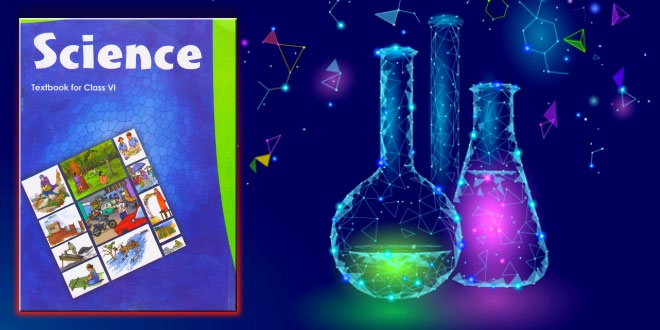Food: Where Does It Come From? – 6th Class NCERT CBSE Science Chapter 01
Question: Do you find that all living beings need the same kind of food?
Answer: No, all living beings do not need same kind of food.
Question: Name five plants and their parts that we eat.
Answer: The names of five plants and their parts that we eat are:
- Paddy: seeds
- Wheat: seeds
- Mustard plant: seeds and leaves
- Brinjal plant: fruits
- Potato plant: stems
Question: Match the items given in column A with those in column B.
Spinach, cauliflower, carrot
Lions and tigers
Herbivores
eat plants and plant products
are vegetables
are all animal products
Answer:
Spinach, cauliflower, carrot
Lions and tigers
Herbivores
are vegetables
eat other animals
eat plants and plant products
Question:Fill up the blanks with the words given:
herbivore, plant, milk, sugarcane, carnivore.
- Tiger is a __________ because it eats only meat.
- Deer eats only plant products and so is called ______________.
- Parrot eats only __________.
- The _________ that we drink, which comes from cows, buffaloes and goats is an animal product.
- We get sugar from ___________.
Answer:
- carnivore
- herbivore
- plant
- milk
- sugarcane
VERY SHORT ANSWER TYPE QUESTIONS
Question: Give two examples where two or more parts of a single plant are used as food.
Answer: Mustard – seeds and leaves,
Pumpkin – fruit and flowers.
Question: Name any one plant that grows in water and is eaten as food.
Answer: Lotus – Stem of lotus is eaten.
Question: Suggest any three ways you can think of to avoid wastage of food.
Answer:
- Avoid leaving food uneaten in meals.
- “Eat to live” and not “live to eat” – excess eating should be avoided.
- Raw food like pulses, grains should be stored properly.
Question: Name two sugar producing plants.
Answer:
- Sugarcane
- Sugar beet
Question: Name a non-green plant that we eat.
Answer: Mushroom
Question: What do you call the habit of an individual to eat a particular type of food items commonly?
Answer: Food habit
Question: Compare your food habits with food habits of your friend who lives in Tamil Nadu.
Answer:
My habit: Chapatti, pulses, lassi, rice, vegetables, mustard oil.
Habit of my friend: Idli, dosa, sambhar, bara, rasam, upma and coconut oil etc.
Question: What items are used to prepare cooked rice?
Answer: Raw rice and water
Question: Study the ingredients of various food items. Do they have some common food ingredients?
Answer: Yes, they have some common ingredients like: water, salt and oil or ghee.
Question: What are the two common sources of most of the ingredients of food items?
Answer:
- Plants
- Animals
Question: Name the three products each provided by plants and animals.
Answer:
Plant products: Grains, cereals and vegetables.
Animal products: Milk, egg and meat.
Question: Name three edible (eatable) parts of plants.
Answer:
- Roots
- Fruits
- Leaves
Question: Which part of the plants do we eat generally?
Answer: We generally eat fruits of many plants.
Question: Which type of seeds give more energy, sprouted seeds or normal seeds?
Answer: Sprouted seeds give more energy than normal seeds.
Question: What is honey?
Answer: A sweet substance (liquid) prepared by bees from the nectar, i.e., sweet juice collected from flowers is called honey.
Question: Where would you place human beings on the basis of food that they eat?
Answer: Omnivores.
Question: What is food?
Answer: The eatable substances eaten by humans and other animals to get energy for various activities for growth and development is called food.
Question: Why should we eat cooked food?
Answer: We should eat cooked food because by cooking we can kill harmful germs and make it germ less. Cooked food can be easily digested and absorbed by our body. Cooking also improves the taste.
Question: Explain the importance of food for living organisms.
Answer: Importance is:
- It provides energy to do various activities.
- It helps in growth.
- It helps to repair and replace damaged parts of the body.
- It protects us from infections and diseases.
Question: Explain the various sources of food items and ingredients with the help of examples.
Answer: There are mainly two sources of ingredients of various food items:
- Plants: Plants provide us fruits, vegetables, pulses, grains, cereals, etc.
- Animals: Animals provide us milk, eggs, meat etc.
Question: Define the term herbivores.
Answer: The animals which eat only plants or plant products are called herbivores. For example: cow, goat and buffalo.
Question: What are carnivores? Explain with examples.
Answer: The-animals which eat other animals are called carnivores. For example, lion and tiger. Carnivores generally eat herbivores and other carnivores.
Question: Define the term omnivores.
Answer: The animals which eat both the plants and animals are called omnivores. For example: cat, dog and human beings.
Question: Make flow charts for the preparation of honey and ghee.
Answer: Preparation of honey:
Preparation of ghee:
Question: Differentiate between herbivores, carnivores and omnivores. Give two examples of each
Example: Cow, Deer and Elephant.
Example: Lion, Lizards.
Example: Dog, Human beings.
Question:
- Name the different parts of a banana plant that are used as food.
- Animal food we get from water resources.
- Four fruits which we eat as vegetables.
Answer:
- Flower, fruit and stem of banana.
- Fish, prawn, lobster and crabs.
- Fruits of Tomato, Brinjal (Eggplant), Ladyfinger / Okra (Bhindi), Cucumber (Loki).
 Class Notes NCERT Solutions for CBSE Students
Class Notes NCERT Solutions for CBSE Students


